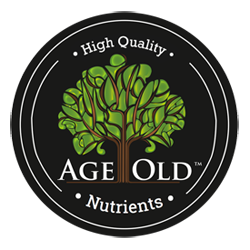The Essentials: A Breakdown Of What Plants Need To Survive
The intricacies of plant growth and development are fascinating. Through years and years of evolution, plants have adapted to thrive in an impressively wide range of climates and environmental conditions. One spectacular aspect of plant life and physiology is their ability to absorb the elemental nutrients needed for survival straight from the soil.
Over the last few hundred years, researchers that investigate plant development have found 16 elements to be essential in the growth and reproduction of nearly all plant life. The air and water provide the elements carbon, hydrogen, and oxygen, but the other 13 are delivered to a plant via the roots.
Essential elements are classified into three groups based on their level of importance to plant growth and development. Macro, or primary, nutrients are of the highest level of importance followed by secondary and then micronutrients. Plants absorb the elemental nutrients when they are in their tiny, little ionic form, whether it is from inorganic, synthetic or organic fertilization. Most can complete an entire growth cycle void of particular elements, but optimal growth will occur when all essential elements are present.
Macro Nutrients
Nitrogen (N): Nitrogen is needed in all stages of plant development but is of most crucial importance during the vegetative or early growth stages. For this reason, high nitrogen fertilizers often come labeled with the word “grow” or something similar. Nitrogen plays a crucial role in the formation of amino acids, which are referred to as the building blocks of proteins. Proteins are essential structural components of plant growth. Nitrogen also encourages rapid cell division, leading to more robust growth.
Phosphorus (P): Phosphorus increases early root formation and helps accommodate healthy establishment of seedlings and transplants. Phosphorus is a vital ingredient for the creation of the nucleic acids DNA and RNA; the genetic information cells use to divide. Phosphorus is also involved in the storage and transportation of the chemical energy created through photosynthesis. Retail fertilizers with higher ratios of phosphorus will often be called flower or bloom because of the element’s positive effect on flower formation.
Potassium (K): Potassium is sometimes referred to as the regulator element in regards to plant growth. It helps regulate the flow of carbohydrates (sugars) throughout the plant, which has a direct effect on the plant’s primary metabolism. Also, potassium helps regulate the opening and closing of the stomata, which controls a plant’s transpiration rate or how quickly water and oxygen exit the plant and carbon dioxide enters. Potassium is also involved in the activation of several plant enzymes. Adequate potassium in the ripening stage can increase the size and strength of fruits and veggies.
Secondary Nutrients
Calcium (Ca): Calcium is an important structural element and is essential for the strengthening of cell walls. Strong cells equal strong plants and, when plants grow with insufficient calcium, yields are often diminished. Calcium deficiency is the number one cause of “blossom end rot” in tomatoes.
Magnesium (Mg): Magnesium is a component of the chlorophyll molecule and is needed for photosynthesis. It also activates and is often part of many plant enzymes. Magnesium and calcium are traditionally sold together as fertilizer under some variation of the word CalMag.
Sulfur (S): A component of the amino acids cystine, methionine and cysteine. Sulfur is involved in the development of plant enzymes and vitamins. Prized essential oils, produced by a plant’s glandular trichomes, contain sulfur.
Micronutrients
Iron (Fe): Iron, taken up by plant roots as the ferrous ion, is required for the synthesis or formation of chlorophyll within plant cells and the typical sign of an iron deficiency is the commonly known symptom called chlorosis. Chlorosis is a yellowing of the leaf in which the veins remain a darker green.
Boron (B): Boron is important in the differentiation of meristem cells. This type of cell can grow into any tissue required by a plant, be it new shoots, roots or flowering parts.
Manganese (Mn): Manganese aids in the activation of the plant enzymes responsible for the creation of DNA and RNA. Also, it works along with iron in the synthesis or formation of chlorophyll.
Copper (Cu): A component of the protein plastocyanin, copper is involved in the pigmentation of chlorophyll and the activation of certain plant enzymes.
Zinc (Zn): Zinc is required for the development of the plant growth hormone Indoleacetic acid (IAA), which aids in root growth and is an essential part of multiple enzymes including glutamic acid.
Chlorine (Cl): During the production of oxygen from water, a part of photosynthesis, chlorine activates important enzymes. Excessive use of chlorine in a fertilization program has been shown to harm soil microorganisms.
Molybdenum (Mo): Within a plant, molybdenum assists in the conversion of nitrate nitrogen to ammonium nitrogen and is essential for the formation of nitrogen-fixing bacterial nodules on the roots of legumes.
Over thousands, if not millions, of years of adaptation plants have slowly become reliant on these essential elemental nutrients in order to grow, develop and eventually reproduce. It is true a plant can grow and reproduce when some of these elements are not present, but if a grower wants to achieve optimal growth and maximum yields all elements must be accounted for in amounts that are appropriate for the crop being grown.


